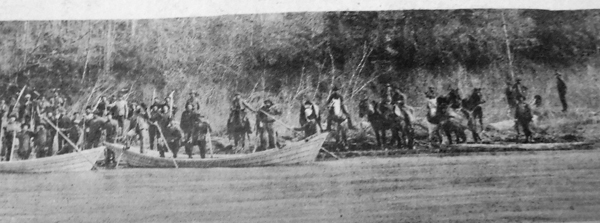
Thursday, January 6, 1972
Ralph Beckwith gave us the following article by Paul Harvey which appeared in the Elkins Inter-Mountain. As a member of the West Virginia Sawmill Operators Association, Mr. Beckwith is concerned that we not carry today the old-time image of the lumberman who had no regard for the land nor concern for the future. He and other operators know they have to have a steady crop of timber to continue in the business in the years to come. They are conservationists, too.
– – –
When a great tree slides through the blades of a saw, professional ecologists cry, “Shame!” Professional lumbermen use that tree while professing devotion to the forest and concern for its future.
Is it “rape” or “love?”
The forest is a dynamic part of the ecosystem in which we live, supplying oxygen, watershed protection, wildlife habitat, recreation.
Environmentalists are urging us to lock up what’s left, fence in the trees, fence out the man with the saw.
And since 1900, we have locked up 16 million acres of forest land. That’s equivalent to the land area of Rhode Island, New Jersey, Massachusetts, Connecticut and Dela- ware – preserved permanently as parks and wilderness areas.
Elsewhere, however, the lumberman continues to harvest the forest.
But before we indict him for rape – certainly before we convict him – let’s check the numbers.
In the last 15 years, he has cut down and used up 197 billion cubic feet of timber.
But during those same 15 years, he and we have grown 246 billion cubic feet of new wood.
Until 1925, man had planted a total of only 1.6 million acres of trees. We’re now planting that many every year.
But, the protesters protest, “new seedlings are not to be compared to the irreplaceable magnificence of virgin timber ripe with wildlife.”
Well, let’s see.
Any forester knows that the unmanaged forest is destined to self-destruct. It cuts off its own sunlight. It chokes to death leafy browse. There are 30 percent to 300 percent more deer in managed forests than in dense, uncut forest.
I’m not “making a case” for the man with the ax. I saw him abuse his perogatives in the first half of this century. Unrestrained, he might indeed have ravaged our woodlands beyond resurrection.
But unwise restraint is equally shortsighted. We each need 500 pounds of paper per year now, and we’ll need 1,000 pounds each within 25 years. We will need 25 billion cubic feet of lumber; twice as much as now.
Our forests cannot afford to stagnate; they’ve got to be growing.
Now, about pollution.
You and I consume oxygen, exhale carbon dioxide.
Trees consume carbon dioxide, give off oxygen.
In this way more than in any other, we need each other.
But an old forest of overly mature trees consumes as much oxygen as it generates.
And average acre of vigorously growing young trees consumes five to six tons of carbon dioxide per year, gives off four tons of fresh oxygen – while producing four tons of new wood.
And it cools and humidifies the atmosphere.
The growing commercial forest is the most efficient antipollution “device” so far developed.
The forest has real enemies: careless people, disease, insects. The insect consumes one-fourth as much as the saw and produces nothing.
The man with the saw, planting more than he is cutting, is building us an ark.


